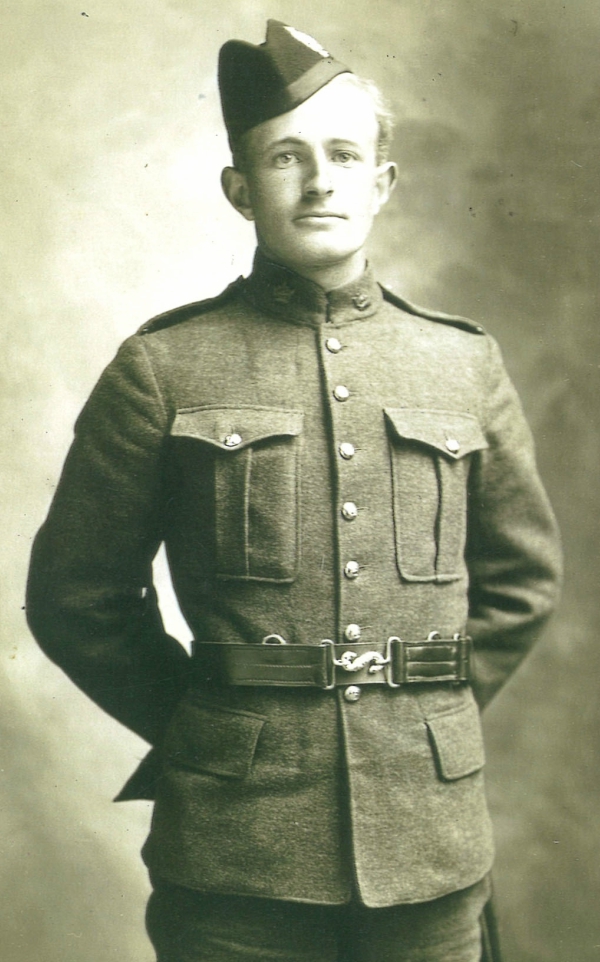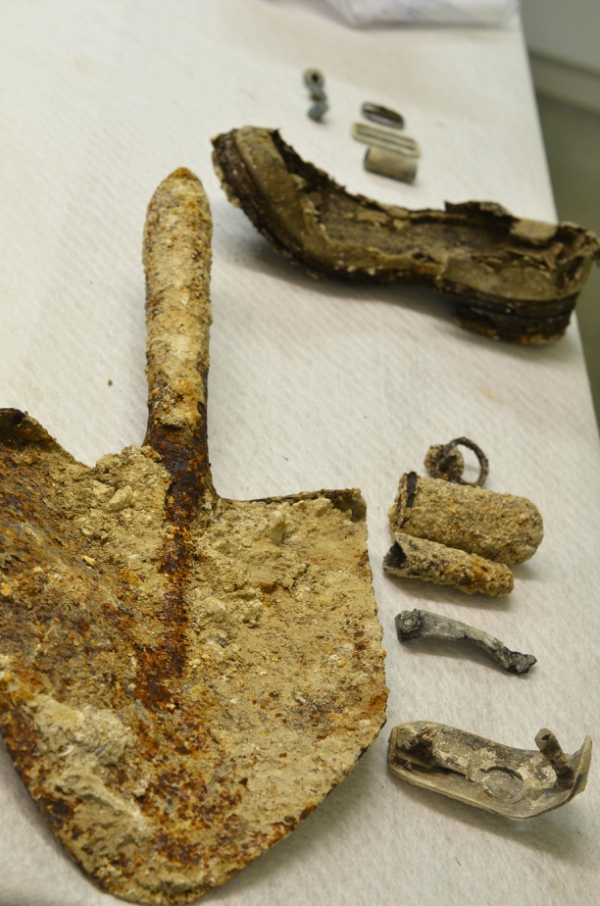Sergeant Archibald Wilson
In 2011, human remains were found in Vendin-le-Vieil, France. The remains were confirmed as those of Sergeant Archibald Wilson.
- Born 12 February 1892 in Stirling, Scotland
- Died 16 August 1917 at the age of 25
- Died a member of the 16th Canadian Infantry Battalion (The Canadian Scottish), CEF
- Remains discovered in August 2011
- Buried at Commonwealth War Graves Commission’s Loos British Cemetery, Plot XVIII, Row H, Grave 11
Archibald Wilson was born 12 February 1892 in Campsie, Stirling, Scotland, one of 11 children to Archibald Wilson and Christina Wilson. Planning to farm in Manitoba, he came to Canada with brothers Gavin Hunter, John Miller and Hugh, as well as their sisters, Margaret and Christina, aboard RMS Hesperian out of Glasgow, Scotland in June 1910.
Archibald Wilson was a barber before enlisting in the Canadian Expeditionary Force (CEF) on 18 December 1914 with the 43rd Canadian Infantry Battalion (The Queen’s Own Cameron Highlanders of Canada), CEF, at the age of 22, in Winnipeg, Manitoba. Two of his brothers also enlisted in the CEF. John Miller Wilson enlisted immediately after Archibald at the age of 24. Gavin Hunter Wilson followed by enlisting on 18 January 1916, also in Winnipeg, Manitoba, at the age of 30.
The 43rd Battalion sailed from Montreal on 1 June 1915, arriving in England on 10 June 1915. On 21 December 1915, Archibald Wilson transferred to the 16th Canadian Infantry Battalion (The Canadian Scottish), CEF part of the Canadian Corps in France who took him on strength on 22 December 1915. Private Wilson participated in several battles throughout 1916 and the first part of 1917. Twice he was wounded severely enough to require hospitalization and recovery in England before returning to the front. On 4 June 1917, Wilson received a promotion to the rank of Sergeant.
On 15 August 1917, the 16th Battalion participated in the assault on Hill 70. Beginning its assault at 4:25am, the 16th Battalion captured its first objective, the “Blue Line,” and their final objective, the “Green Line,” on schedule with limited casualties. On 16 August, the battalion suffered substantial losses when German artillery focused on the new Canadian Corps’ defensive positions. The Canadian Corps defences suffered heavy shelling for several days following the initial attack. The 16th Battalion was relieved by other Canadian troops in their frontline position at 4:00am on 17 August. Sergeant Wilson was killed in action 16 August 1917 at the age of 25.
Following the war, Sergeant Wilson’s name was engraved on the Canadian National Vimy Memorial commemorating Canadian soldiers who died during the First World War and have no known grave.
Along with his two brothers who were also killed in the war, Sergeant Wilson was also commemorated as “Cpl. Arch. Wilson” on the Aberfoyle War Memorial in Perthshire, Scotland. Private John Miller Wilson died a member of the 16th Battalion on 13 June 1916 and is believed to be buried at Commonwealth War Graves Commission’s Railway Dugouts Burial Ground (Transport Farm). Private Gavin Hunter Wilson died a member of the 3rd Division Ammunition Column, Canadian Field Artillery on 11 December 1916 and was buried in Commonwealth War Graves Commission’s Louez Military Cemetery.
On 5 August 2011, skeletal human remains were discovered during a munitions clearing process near rue Léon Droux, Vendin-le-Vieil, France. Alongside the remains were a few artifacts including a pair of leather boots and buttons bearing the insignia of the 16th Battalion.
Through historical, genealogical, anthropological, archaeological, and DNA analysis, with the assistance of the Canadian Forces Forensic Odontology Response Team, and the Canadian Museum of History, the Casualty Identification Review Board was able to confirm the identity of the remains as those of Sergeant Archibald Wilson in October 2017.
Sergeant Wilson was buried on 25 August 2018 in Commonwealth War Graves Commission’s Loos British Cemetery in Loos-en-Gohelle, France by members of The Canadian Scottish Regiment (Princess Mary's) from Victoria, British Columbia. Attending the burial were great-nephews, great-nieces and other family members, as well as representatives of the Government of Canada, the local French government and the Canadian Armed Forces.
For further information on Sergeant Wilson, you can view his personnel file on the web site of Library and Archives Canada.
More on casualty identification
Page details
- Date modified:


